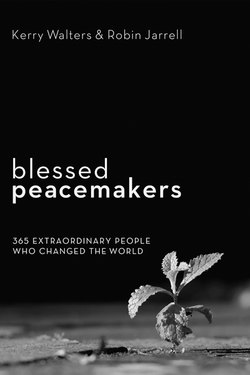Читать книгу Blessed Peacemakers - Robin Jarrell - Страница 75
На сайте Литреса книга снята с продажи.
12 March Preah Maha Ghosananda
Оглавление23 May 1929—12 March 2007
Joyful Proclaimer of Peace
In Cambodia, the new Khmer Rouge regime declared 1975, the year of its takeover, “Year Zero.” Everything was to be started over. The old would be torn down and the new would be built.
By the time the regime hit Year Four, its final one in power, it had slaughtered or starved to death an estimated one-fifth of the nation’s population, upwards of two million people. Buddhist monks and nuns—“social parasites” whom Khmer Rouge fanatics especially loathed—were driven into exile, forced at gunpoint to recant their vows, or murdered. Before the Khmer Rouge there were around sixty thousand of them in Cambodia. Afterwards, there were scarcely three thousand.
Preah Maha Ghosananda, whose name in Pali means “Joyful Proclaimer,” had missed the killing years in his native Cambodia. For over a decade, from 1965 to 1978, he lived in deep seclusion in a Buddhist monastery deep in the forests of Thailand. After earning a doctorate from an Indian university, he had gone there to practice meditation. By the time he emerged from his hermitage, the Khmer Rouge had all but eradicated the Buddhist presence in Cambodia. It had also massacred all of Ghosananda’s family.
Thousands of Cambodians had fled to refugee camps just across the Thai border. Ghosananda began visiting them, building temporary hut-temples wherever he went, blessing the people, and offering them consolation. Although a man temperamentally inclined to solitude, study, and meditation, Ghosananda threw himself into alleviating suffering in the world around him and never looked back. “We must find the courage to leave our temples,” he said, “and enter the suffering-filled temples of human experience.”
By the time the Khmer Rouge thugs were overthrown in 1979, Cambodia was in ruins, its economy and infrastructure shattered and its people demoralized. Moreover, guerrilla fighting in the Cambodian jungles between feuding factions continued, and hundreds of thousands of hidden landmines, a legacy from the years of violence, dotted the landscape. In order to inaugurate the spiritual rejuvenation of his homeland, Ghosananda undertook annual Dhammayietra, or “Pilgrimages of Truth” from one end of Cambodia to the other. Dressed in the saffron robes of a monk, he led groups of fellow Buddhists, laypersons as well as monks and nuns, on a “step-by-step” proclamation of peace and healing to some of Cambodia’s most war-torn and damaged areas. Year after year he and his companions risked landmines, guerrilla hostility, weariness, and illness to walk across the land and bring hope and reconciliation to the people they met. At the start of each pilgrimage, Ghosananda announced: “Our journey for peace begins today and every day. Each step is a prayer, each step is a meditation, each step will build a bridge.” Everywhere they went, the Pilgrims of Truth chanted: “Hate can never be appeased by hate; hate can only be appeased by love.”
